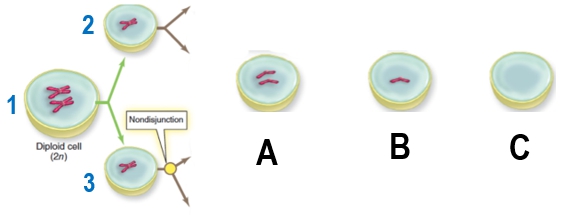In this video, we're going to talk about genetic variation during meiosis. And so recall from our previous lesson videos that meiosis results in 4 haploid cells that are all genetically different from one another, and so meiosis creates genetic variation. And so it turns out that meiosis actually creates genetic diversity or genetic variation via two main events. And so the first main event that creates genetic diversity during meiosis is crossing over. And the second main event that creates genetic diversity during meiosis is independent assortment. Now in this video, we're going to focus mainly on the process of crossing over. But later in our course, in a different video, we'll talk about the process of independent assortment. Now crossing over is the process in which pairs of homologous chromosomes actually exchange their genetic material, essentially swapping segments of DNA. And so you can see that during crossing over, homologous chromosomes are going to cross over and swap or exchange their DNA. Now this process of crossing over is ultimately going to form non identical sister chromatids. And crossing over occurs specifically during prophase 1 of meiosis 1. And so it's important to note that crossing over, this process that creates genetic diversity, only occurs during meiosis 1, specifically prophase 1 of meiosis 1. But crossing over does not occur during mitosis, which recall mitosis creates genetically identical, not genetically diverse cells.
Now when your professors are explaining, crossing over and when your textbooks describe crossing over, they're likely going to mention these other terms called synapsis and chiasma. Synapsis is the process where homologous pairs of chromosomes actually align themselves and align their DNA sequences at similar alleles to prompt crossing over. And so synapsis is really just this alignment of the DNA sequences between homologous chromosomes. And chiasma is really just the site of crossing over, the attachment site between 2 homologous chromosomes, allowing these homologous chromosomes to cross over their genetic material, exchange genetic material. But the chiasma is really just the site of crossing over. And so, within this word chiasma, you can see the root chi, which is actually a Greek letter that resembles an x. And so what you'll notice is that the chiasma really does resemble the formation of an x, and it represents the site of crossing over.
And so if we take a look at our image down below, notice that we're showing you one replicated chromosome over here that has 2 identical sister chromatids, and we're showing you another replicated chromosome over here that also has 2 identical sister chromatids. And notice that these, replicated chromosomes are very, very similar in size and shape. They carry the same genes, but not necessarily the same versions of the genes or the same alleles. And so that makes these 2 chromosomes here homologous chromosomes. And, again, you can see here that for this particular gene a, they have the same version of the gene, the capital A version of this gene. But notice that for gene b, the blue chromosome has the capital B version of the gene, whereas the red chromosome has the lowercase b version of the gene. And so homologous chromosomes are going to be similar in size, shape, carry the same genes, but not necessarily the same versions of genes.
Now what's important to note is that, again, this sister chromatid is exactly identical to this other sister chromatid, and, this is going to be the case before crossing over takes place. And the same goes for this sister chromatid here on this one and this one over here. They are identical to each other before crossing over takes place. And so, again, the process of synapsis is where the homologous pairs of chromosomes are going to align their DNA sequences at similar alleles. And so you can see that synapsis is shown here in the background here, with the yellow background, where it's just showing the alignment here of the chromosomes to prompt crossing over to take place. And then notice over here in the middle image that we have this overlapping, region of the homologous chromosomes called the chiasma. And this represents, again, the site of crossing over, where crossing over is going to take place. And so notice that at the very very end of crossing over that we have a chromosome that is mostly blue but has a little bit of the pink chromosome because there has been an exchange of the genetic material. And then notice over here we have a chromosome that is mostly red, but has a little bit of blue, again, because there has been an exchange of the genetic material in the process of crossing over. And so this process of crossing over takes identical sister chromatids and ends up converting them into non identical sister chromatids. And so notice that this chromatid here is no longer identical to the chromatid that's over here because there has been this exchange of genetic material between these pairs of homologous chromosomes. And so crossing over here, we're showing crossing over at one particular gene, but crossing over can actually occur between 100 or thousands of genes, between homologous chromosomes, and crossing over occurs randomly with every single event of meiosis. And so this is going to create an enormous amount of genetic diversity, swapping little bits and pieces of chromosomes, between homologous pairs of chromosomes. And so again, crossing over is one of the main events that creates genetic diversity during meiosis. And later in our course, we're gonna talk about the second event that creates genetic diversity during meiosis, independent assortment. And so that concludes this video, and I'll see you all in our next one.


